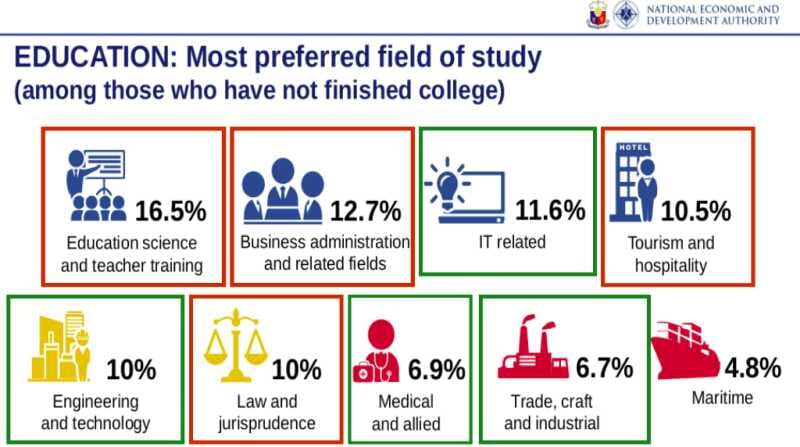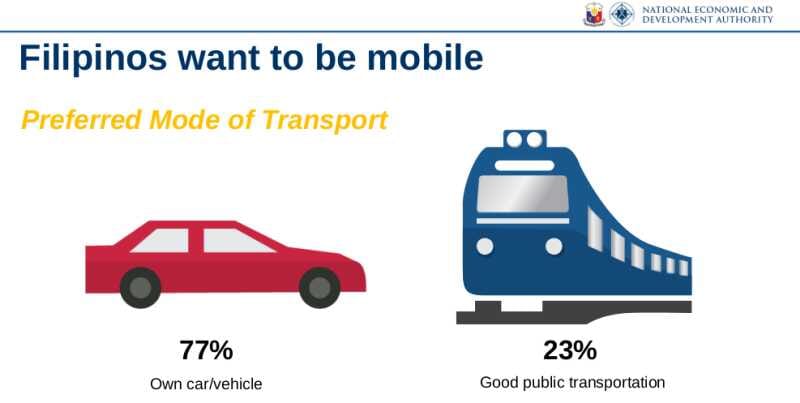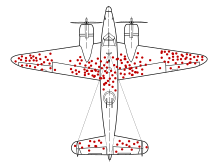Dutertenomics
Table of Contents
During his presidential campaign Duterte promised to give a comfortable life to the poor. However, the unstoppable inflation* from 2020 directly contradicts this promise since it makes life less comfortable.
Maharlikanism Note
To see where the contradiction occurs, let’s dissect Dutertenomics. Its most prominent parts are:
- Build Build Build
- TRAIN Law (This is higher taxation used to pay for Build Build Build)
- Ease of business
- Land Distribution
- Continuation of Pantawid Pamilya of Noynoy Aquino
These policies are consistent with the Keynesian doctrine, except for “Pantawid Pamilya” which is Conditional Cash Transfer (CCT), a modified version of Universal Basic Income (UBI) implemented by former President Noynoy Aquino.
Maharlikanismm Note
CCT is a neoliberal policy* that helps development banks such as the World Bank by giving employment to the bank’s consultants and its money.
The non-neoliberal, non-liberal financial way of poverty alleviation is called microfinance. The conservative way is welfare either by the state via social security or by religion via thites or forced donations.
Likewise, tech startups lobby for UBI to give employment to themselves via blockchain and other fancy new technologies, even if there might be no added benefit for the poor.
The original Dutertenomics itself is quite limited, so it absorbed the NEDA* plan called Ambisyon Natin 2040. This was created by Arsenio Balisacan of the neoliberal Philippine Competition Commission during Noynoy Aquino’s administration.
Maharlikanism Note
Ambisyon Natin 2040 : Neoliberalism Under the Guise of Socialism
This policy was formulated by interviewing 10,000 people around the nation, asking them what they and the country should achieve by 2040. Since the country is poor, then of course we can expect that the answers will reflect the shallow desires of poor people:
- 79% want a comfortable life
- 17% want a an affluent life
It revealed that the uneducated wanted to study:
- teaching*
- business administration
- tourism
- law
Maharlikanism Note
These subjects are easy and so lead to low-value services (in red below). Few people want to study the difficult subjects that lead to high value employment (in green).

Also alarming is the preference for cars over public transport such as buses and trains.

NEDA then built policies around this data:
- It added more road projects under the Build, Build, Build program instead of creating a proper state-owned bus system (NEDA, as a neoliberal agency, might never allow anything state-owned)
- It emphasized tourism and hospitality
- It ignored support for medical training and beefing up the healthcare system. Instead, it focused on the financial aspect of healthcare as health insurance through the Universal Healthcare Law
- It focused on rice tariffication to allow imports in the guise of lowering food prices to benefit the poor. This is classic neoliberalism
As expected, these backfired when the unexpected pandemic hit:
- The lockdowns prevented people from travelling and from using the new roads from Build Build Build
- Tourism collapsed
- The lack of support for medical training led to a shortage of nurses, which made universal healthcare act irrelevant
- Rice tariffication led to agircultural imports that did not reduce rice prices, but instead destroyed local agriculture
The NEDA Flaw: A Reverse Kind of Survivorship Bias
The glaring error with the NEDA plan was that it created economic policy from interviews with the people. The problem is that a poor country like the Philippines will likely be full of poor people. If you ask poor people what they want, then they will give answers that will propagate the same poverty.
NEDA’s mistake is a kind of survivorship bias *.

Maharlikanism Note
An easy proof of this bias is the national preference for subjects like teaching, lawyering, tourism, and business administration that lead to low value jobs. Are Germany, Japan, South Korea known for their teachers, lawyers, tourism, or accountants? No. They’re known for their advanced manfuacturing as Siemens, Hyundai, and Mitsubishi.
Maharlikanism Note
Another proof is the preference for cars over public transport. Did Japan, France, and Singapore solve their public transportation by allowing cars as a public policy? No. In fact, they had the opposite policy which oppressed car owners with high taxes and built subways and shinkansen instead of freeways.
By implementing policies that are OPPOSITE of what poor people want, the Japanese, Singaporeans, French, and Germans are actually able to have a more COMFORTABLE life.
By implementing policies the poor people want, Venezuela and Brazil put themselves into POVERTY.
More Proof of Ignorance of Policymakers
NEDA policy builds a lot of roads to address the demand for cars. They never think that if their policy succeeds then more people will actually own cars. These cars will then flood the new roads to create new traffic jams!
If policymakers just let people have their way, then the nation will degenerate quickly with everyone buying cars, flocking to easy jobs, and no one* doing the difficult or low-paying ones.
Maharlikanism Note
If everyone wants to be a singer, boxer, or online seller, then who will plant crops, build the power plants, do the medical services, or create vaccines?
If few people plant crops, build power plants, hospitals, and vaccines, then those goods and services will have a shortage.
If there is a shortage then their prices rise and there will be more Pharmally-style importation.
If their prices rise then life would not be comfortable, violating the very goal of the policy.
Thus, Ambisyon Natin 2040 naturally goes against itself
Proof of this is the collapse of the economy in 2020 which NEDA says is expected to recover only after 10 long years. They blame the pandemic instead of themselves. This is absurd since the economy of other countries are not so badly affected. Even poor Cuba, heavily embargoed by the US, is able to make Covid vaccines simply because the government encouraged more people to study difficult subjects.
Ambisyon 2040 is still consistent with our earlier observation that local policymakers, whether liberal ‘dilawan’ or nationalist ’loyalista’, are ignorant of cause and effect . This ignorance seemed to begin in the early 1960s after the presidency of Magsaysay* and Garcia who still had the right policies.